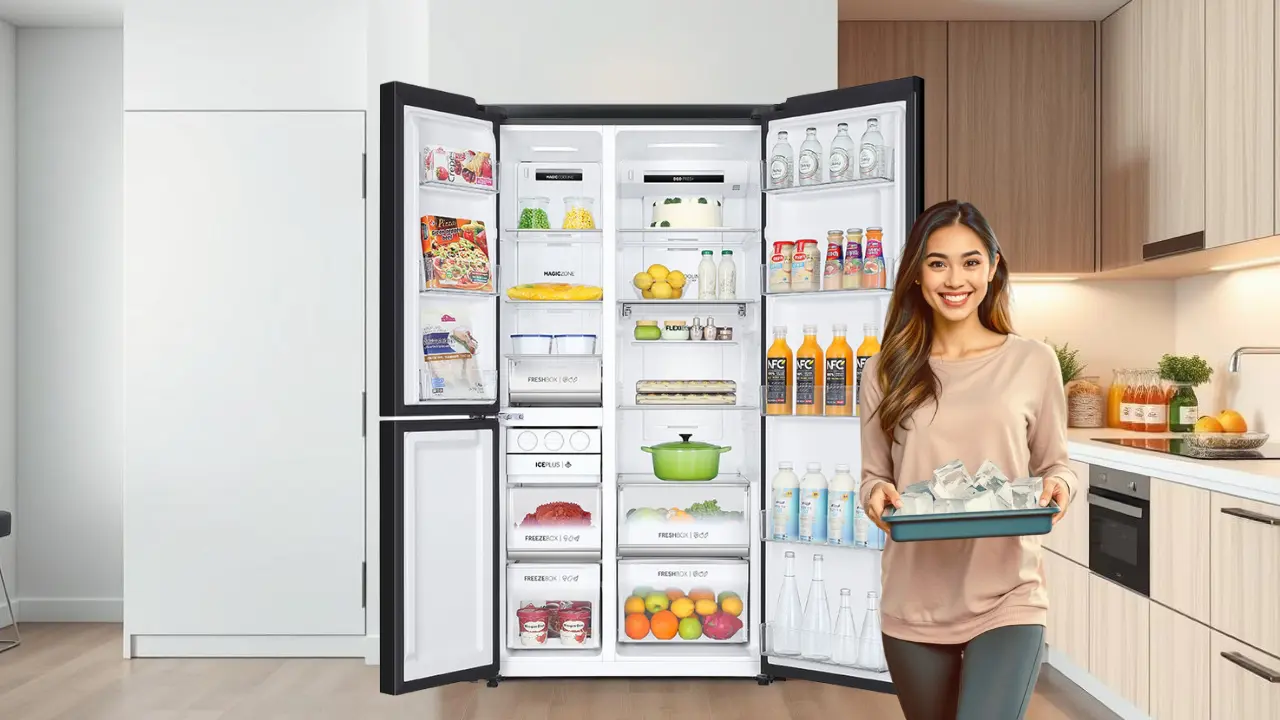Your refrigerator’s ice maker is a modern-day convenience that you probably don’t think much about, until it stops working! Whether it’s producing cloudy cubes, slow to make ice, or just not working at all, a little maintenance can go a long way in keeping it running smoothly.
Like any appliance, your ice maker needs regular cleaning and care to stay in top shape. Over time, mineral deposits, food debris, or even mold can build up, affecting the taste and quality of your ice. The good news? Maintaining it isn’t complicated!
With just a few simple steps, like regular cleaning, checking the water filter, and keeping an eye on water lines, you can ensure your ice maker stays efficient and hassle-free.
In this guide, we’ll walk you through everything you need to know to keep your ice maker in peak condition, so you’ll never have to worry about running out of ice when you need it most!
Understanding How an Ice Maker Works
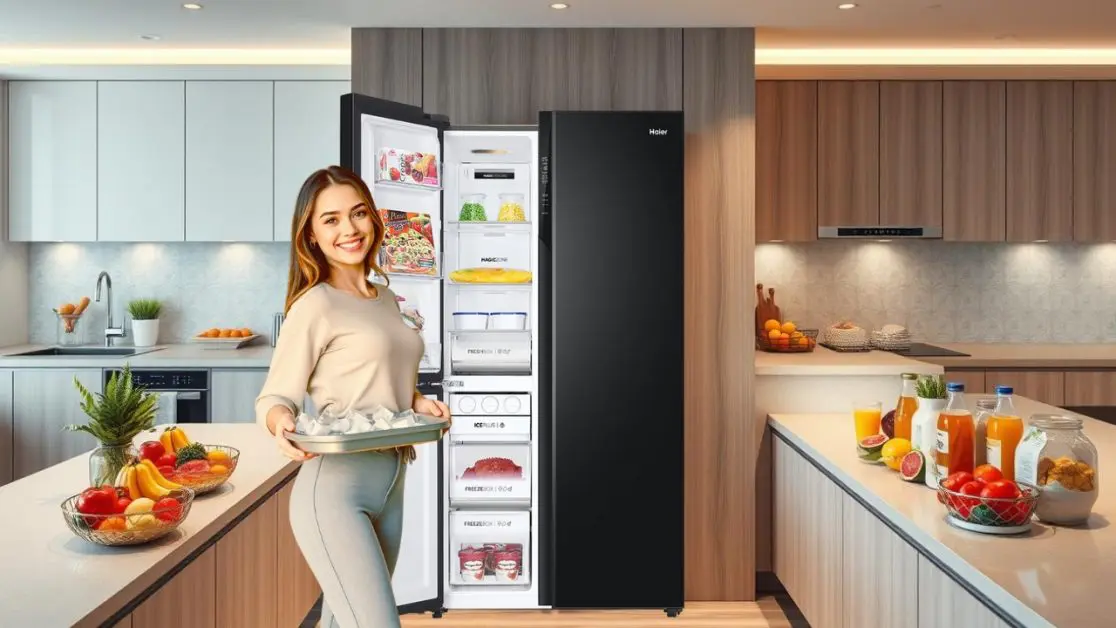
An ice maker follows a simple cycle to produce ice:
- Water is supplied to the ice maker’s water tank.
- The water is frozen into ice and stored in a tray.
- The ice is then dumped into a storage container, ready for use.
- This process repeats automatically.
Since the ice maker operates on a continuous cycle, any disruption in water flow, freezing efficiency, or cleanliness can impact its performance. Proper maintenance ensures the ice remains fresh and the machine functions effectively.
Monthly Cleaning of the Ice Storage Bin
Regular cleaning of the ice storage bin prevents the accumulation of bacteria and mold, especially in humid environments. Ice left for too long can also absorb odors from the refrigerator.
How to Clean the Ice Bin:
- Switch off the ice maker.
- Remove the ice storage bin and discard any excess ice.
- Wash the bin with warm water and mild dish soap using a soft sponge.
- Rinse thoroughly and allow it to air dry before placing it back.
- Turn the ice maker back on.
If you live in a humid environment, consider cleaning the bin more frequently to prevent fungal growth.
Deep Cleaning the Ice Making Unit
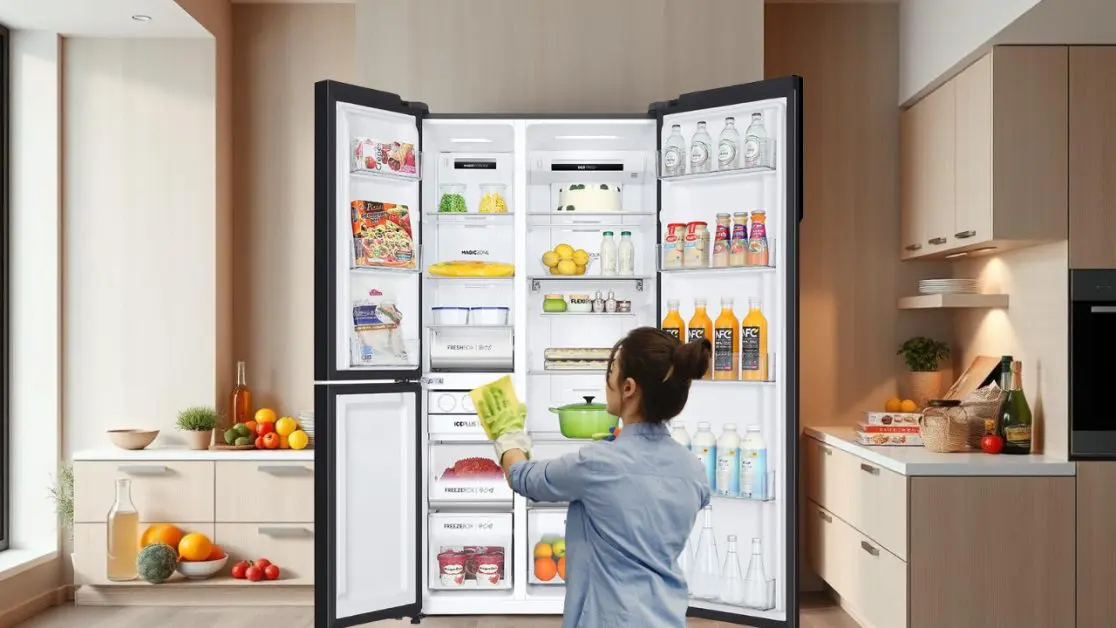
Over time, ice makers can accumulate mineral deposits and bacteria, affecting ice quality. A deep cleaning session every few months helps maintain efficiency.
Steps for Deep Cleaning:
- Unplug the refrigerator.
- Locate the ice-making assembly inside the freezer.
- Mix equal parts white vinegar and warm water.
- Dip a cloth in the solution and wipe down all ice-making surfaces.
- Use an old toothbrush to scrub stubborn stains or mineral buildup.
- Wipe down with a clean, damp cloth.
- Ensure the unit is completely dry before plugging the refrigerator back in.
Avoid using harsh chemical cleaners as they can leave harmful residues.
Examining and Cleaning the Water Filter
The water filter is essential for ensuring clean ice by removing impurities from the water supply. Over time, it can become clogged, reducing water flow and affecting ice production.
How to Maintain the Water Filter:
- Locate the water filter, usually found behind a vent cover or inside the fridge.
- Remove the filter cover by unscrewing it.
- If using a replaceable filter, follow the manufacturer’s instructions for changing it.
- If your filter is washable, soak it in warm soapy water for a few minutes, then rinse thoroughly.
- Allow the filter to dry completely before reinserting it.
- Reset the filter indicator if your model includes one.
If you live in an area with hard water, you may need to replace or clean the filter more frequently to prevent mineral buildup.
Inspecting the Water Line for Issues
A compromised water line can affect the ice maker’s performance. Regular inspection ensures smooth water flow and prevents leaks.
What to Check:
- Look for kinks or bends in the line that may restrict water flow.
- Check for signs of wear, leaks, or loose connections.
- Ensure the water reservoir valve is fully open.
If the water line appears damaged or clogged, consider seeking professional assistance.
Sanitizing the System to Maintain Freshness
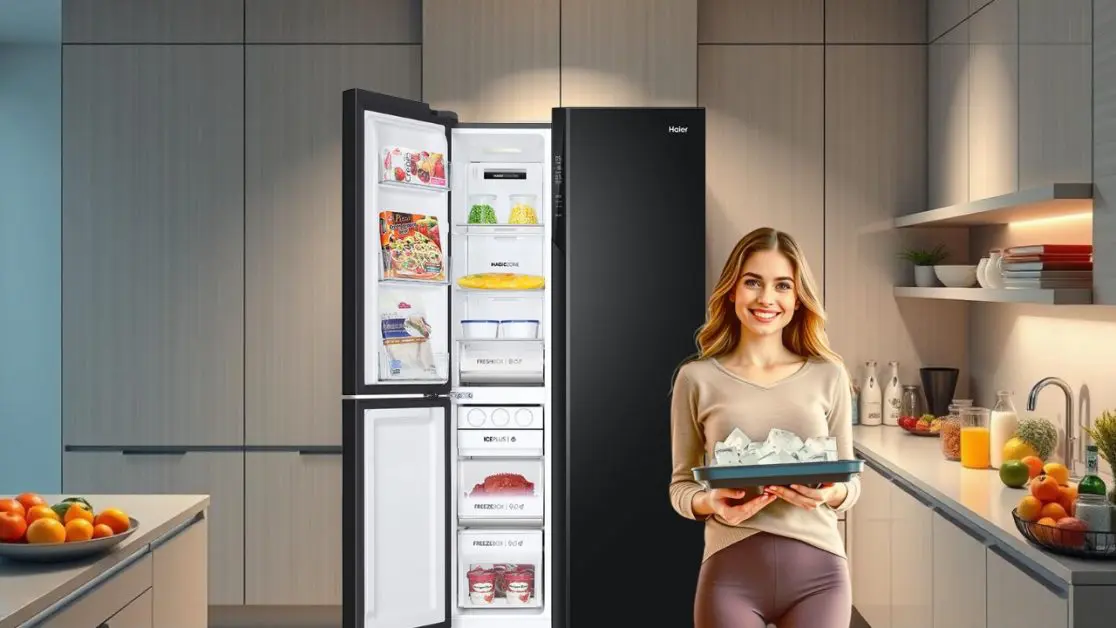
Over time, bacteria and mold can build up inside the ice maker, affecting the quality of ice. Sanitizing the system every six months helps prevent contamination.
How to Sanitize the Ice Maker:
- Switch off the ice maker and remove all ice.
- Mix a tablespoon of baking soda with 500ml of fresh water.
- Pour the solution into the water reservoir.
- Run two or three ice-making cycles and discard the ice.
- Turn the ice maker back on.
This simple process also helps eliminate any lingering odors.
Ensuring the Refrigerator is Properly Leveled
An uneven refrigerator can affect the ice maker’s efficiency, leading to uneven ice formation or mechanical strain.
Leveling Your Refrigerator:
- Place a spirit level on top of the refrigerator.
- Check the alignment horizontally and vertically.
- If needed, adjust the legs using a wrench.
- Verify the leveling again to ensure stability.
A well-leveled refrigerator helps maintain consistent ice production.
Common Ice Maker Problems and Their Solutions
Even with regular maintenance, ice makers can sometimes encounter issues. Here are some common problems and ways to fix them.
1. Ice Tastes or Smells Bad
- Possible Causes: Old ice, a dirty water filter, or food odors in the freezer.
- Solution: Discard old ice, clean the bin, replace the water filter, and store strong-smelling foods in sealed containers.
2. Ice Maker Not Producing Ice
- Possible Causes: Water supply issues, frozen water lines, or a broken component.
- Solution: Check the water valve, thaw frozen water lines, and ensure the ice maker arm is lowered. If the issue persists, call a repair service.
3. Ice Cubes Are Too Small
- Possible Causes: Low water pressure or a clogged water filter.
- Solution: Check for kinks in the water line, ensure the valve is fully open, and replace the water filter if needed.
4. Ice Cubes Stick Together
- Possible Causes: Freezer temperature fluctuations or excess moisture.
- Solution: Keep the freezer door closed properly, maintain a consistent temperature (-18°C), and store ice in an airtight container.
Addressing Hard Water Problems in Indian States
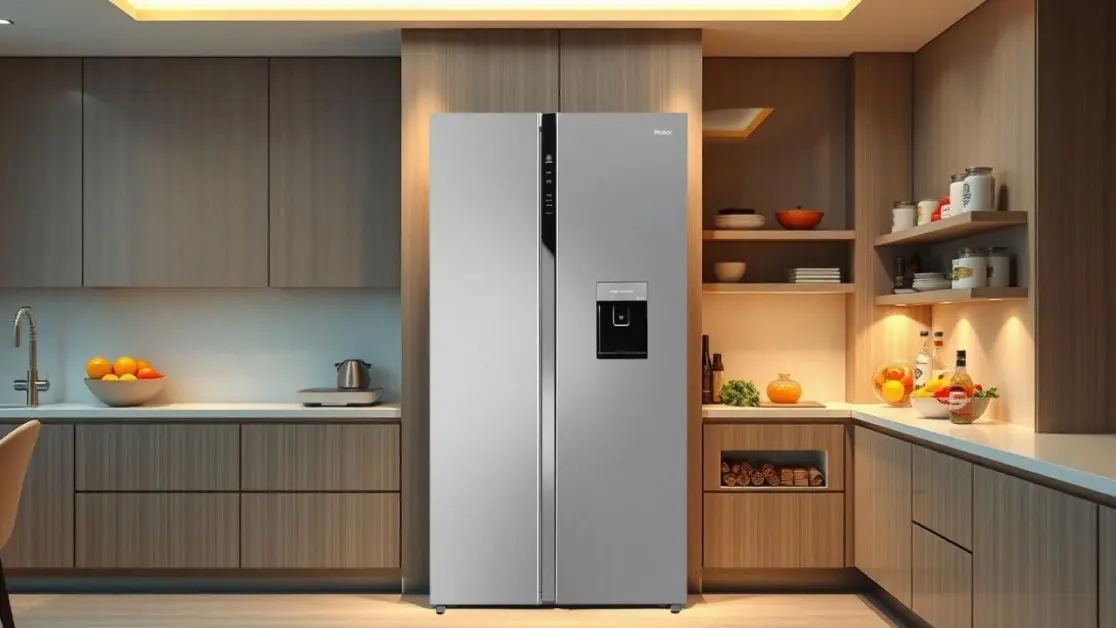
Hard water is common in many regions of India and can lead to mineral buildup inside the ice maker. To counteract this issue:
- Use a water softener to prevent scale formation.
- Install a quality water filter to remove impurities.
- Increase cleaning frequency to prevent deposits from accumulating.
- Run a vinegar rinse monthly to dissolve mineral buildup.
Energy-Saving Tips for Efficient Ice Maker Use
A few simple habits can help improve energy efficiency:
- Keep the freezer adequately stocked to maintain a stable temperature.
- Set the freezer temperature to -18°C.
- Turn off the ice maker when going on vacation.
When to Seek Professional Help
While routine maintenance can resolve most issues, professional assistance is recommended for:
- Persistent leaks or electrical faults.
- Complex mechanical problems.
- Issues beyond your expertise or confidence level.
Choosing the Right Refrigerator with an Ice Maker
If you’re considering a new refrigerator with an ice maker, selecting the right model is crucial for convenience and efficiency. Brands like Haier India offer innovative designs tailored to Indian households, ensuring both performance and durability. When choosing a refrigerator, consider key features that enhance your ice-making experience.
Look for models equipped with advanced ice-making technology, such as quick-freeze functions or dual ice makers, to ensure a steady supply of ice. Energy-efficient performance is another essential factor, helping you save on electricity bills while keeping your ice maker running smoothly. If you live in an area with hard water, opt for refrigerators with built-in filtration systems to prevent mineral buildup that can affect ice quality.
With the right choice and proper maintenance, such as cleaning the ice tray, changing filters regularly, and checking water lines, you can enjoy clean, fresh ice for years without any hassle!

